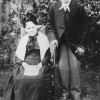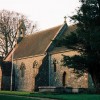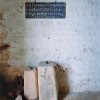In the Domesday Book Buckhorn Weston is recorded as being of “fair size” with a population of 26. Later, Hutchins refers to an isolated farmhouse in the south west of the parish that appears to stand in an area of former open fields; it existed in 1641, showing that enclosure had taken place before that date. The parish is in the north west of the county on the border with Somerset and consists of 1,705 acres.
The Parish Church is dedicated to St. John the Baptist and is on the hillside near the centre of the village. Its walls are of squared rubble with ashlar dressings and the roofs are tiled. The chancel and nave were built in the 14th century, but were altered during restoration works in the 19th century, when extensive changes were made including the enlargement and rebuilding in 1870 of the north aisle following the taking down and rebuilding of the west tower in 1861. The low tower houses six bells the earliest being dated 1602. The north arcade of the nave and the south porch date from the 15th century.
In a recess in the chancel wall there is a recumbent effigy of a young man asleep in the dress style of the late 14th century: a short tunic with tippet and hood, tight hose and a belt with purse. He has long hair; his hands are together in prayer, his feet rest on a beast, his head on a tasselled pillow supported by angels.
Surrounding the ringing area are six painted panels including two angels, King David and the Nativity; Pevsner describes these as “poorly painted”. They were originally on the front of the singer’s gallery but that structure was removed during the 19th century.
The churchyard is entered through wrought iron gates which were erected in memory of Captain Hugh Stapleton RN., who was born in the manor house in 1863. Opposite the church is a public house, The Stapleton Arms.
Buckhorn Weston is a self-sufficient little village, which is probably just as well as it is difficult to find and has kept its secrets close from the time of Bokere, the Saxon who gave this place its name.



